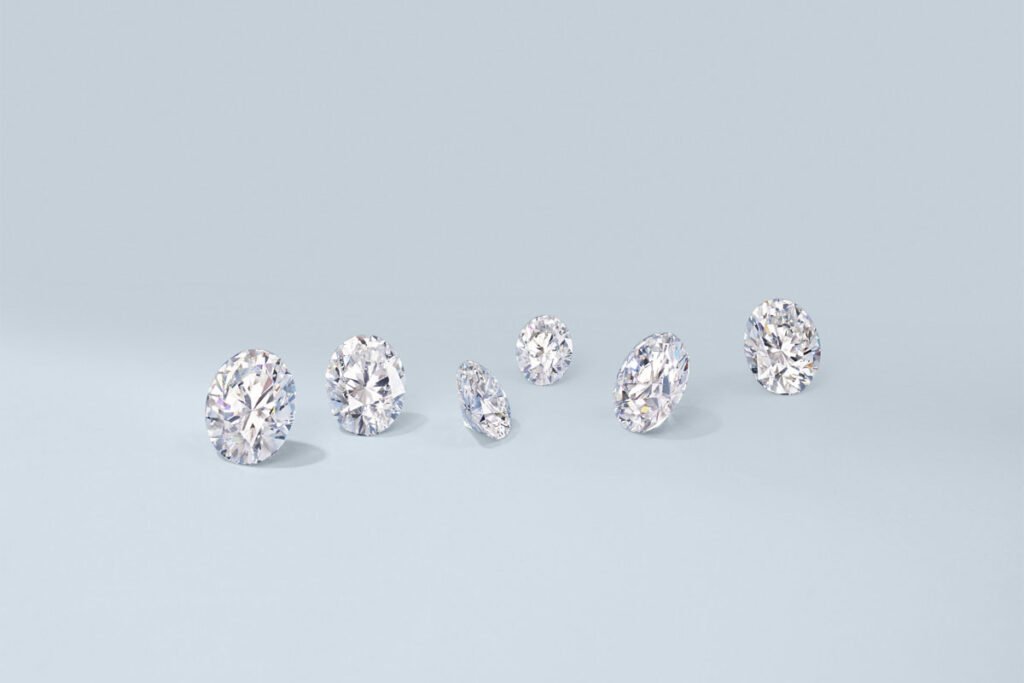When you go out to shop for a diamond engagement ring, it may never occur to you that the sparkling stone that catches your fancy is graded according to Gemological Institute of America’s (GIA) 4Cs – carat, color, clarity, and cut. Carat, color, and clarity are inherent characteristics of the stone, but “cut” is what made it land on your ring. It is responsible for making a diamond shine as bright as a morning star. And should “cut” be given an extra polish, what comes out of the line are triple excellent diamonds.
What You Don’t Know About Triple Excellent Diamonds
People on a budget buy diamond rings for reasons of design, setting, and maybe, the shape of the stone. Never mind if the stone is less than a carat in weight.
But if the budget is no problem, they will be more discriminating. They would look for a particular color, carat size, and maybe, clarity. But if you have the same taste (and budget) as Jennifer Lopez, you would probably pull the plugs off carats size, go for the clearest, flawless, and the most perfectly-cut engagement ring diamond.
So what is it?
What are Triple Excellent Diamonds?
At the outset, it was stated that giving “cut” that extra mile results in a triple excellent stone. But what does it specifically mean? And what is triple excellent in diamonds?
A triple excellent diamond is one that has been cut with excellent cut craftsmanship, polish, and symmetry. Hence, the Triple X designation.
It is not, however, a “cut” grade but a tradename when referring to stones with Excellent cut, polish, and symmetry on the GIA grading system. And the GIA never uses the term.
But why are cut, symmetry, and polish important? First, they indicate the quality of craftsmanship that went into transforming a rough diamond into a polished stone. Second, they affect a diamond’s interaction with light. An excellent cut makes the stone shine and glitter more; making it look more brilliant and fiery.
Most diamond buyers prefer Triple Excellent diamonds because they want something of the best craftsmanship. But this is not necessarily a good buy. The reasons will be revealed late in this article. But first, you should know…
What is an Excellent Diamond?
An excellent diamond is another term for “excellent cut diamond.” It is one of five diamond cut grades set by the GIA to determine “cut” quality. The others are Very Good, Good, Fair, and Poor.
As mentioned above, clarity and color are inherent properties of a stone. But no matter how clear or colorless a diamond is, if unproperly cut, it will not amount to much.
So what is meant by diamond “Cut?” It refers to a stone’s proportions—its depth and angles of its facets—after it is cut and polished. These two affect how light is bounced within and around a diamond.
An excellent cut means a diamond’s proportions are within the right parameters to allow it to give off an intense brightness, sparkle, and fire. At the same time, it gives off even patterns of light and dark areas (called scintillation). On the other hand, poorly cut diamonds have large light and dark patches that make them look dull and uninteresting to the eye. But are they worth the money?
A diamond with an excellent cut grade, very good polish and good symmetry costs less than a Triple X provided everything else is equal. The visual difference between them is not visible to the naked eye. So if you want to save a little bit, stay away from a Triple Excellent. Go for a diamond with a lower color grade, and carat weight—even it if has a slight fluorescence.
Are Excellent Cut Diamonds Worth It?
Triple Excellent diamonds are the Cadillacs or the Mercedes Benzes of diamonds. They show superb fire and brilliance. But are they worth the buy? The question cannot be answered in a straight “Yes” or “No.” There’s more to a diamond than its cut.
To have a better understanding of the reasons behind this requires knowing the basic parts of a cut diamond (shown below).
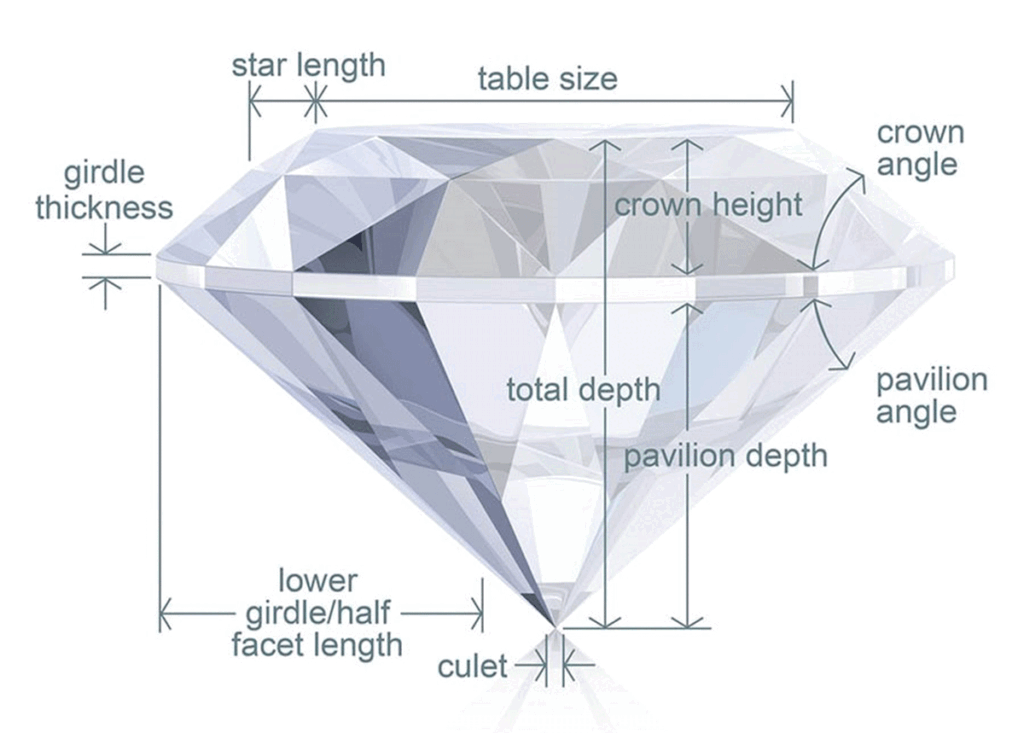
As mentioned earlier, excellent diamonds are GIA’s classification of stones in the following categories: cut, polish, and symmetry. Now let’s dissect each one…
Cut
Cut refers to how well a diamond is cut and polished; how well-proportioned it is with respect to its depth and symmetry.

It doesn’t have anything to do with the diamond shape such as pear (like the one in this Gordons Jewelers review), oval, round, etc. Diamond cut is important because it directly impacts a stone’s beauty and brilliance and how well it reflects light, and its luminosity.
The best diamond cut is one that maximizes the light that strikes each pavilion, instead of escaping through other parts of the diamond.
When shopping for diamonds, you may be confronted with such questions as which is better, “ideal cut diamond vs excellent cut.” They’re the same. The ideal cut is the term used by the AGS (American Gem Society), while the GIA uses excellent cut.
Polish
This is the condition of the facet surfaces. They act as mirrors and if they are clear and smooth, they reflect light well. Otherwise, they can make the diamond look dull. A good polish can be achieved by using fine-grained diamond dust on a polishing wheel.
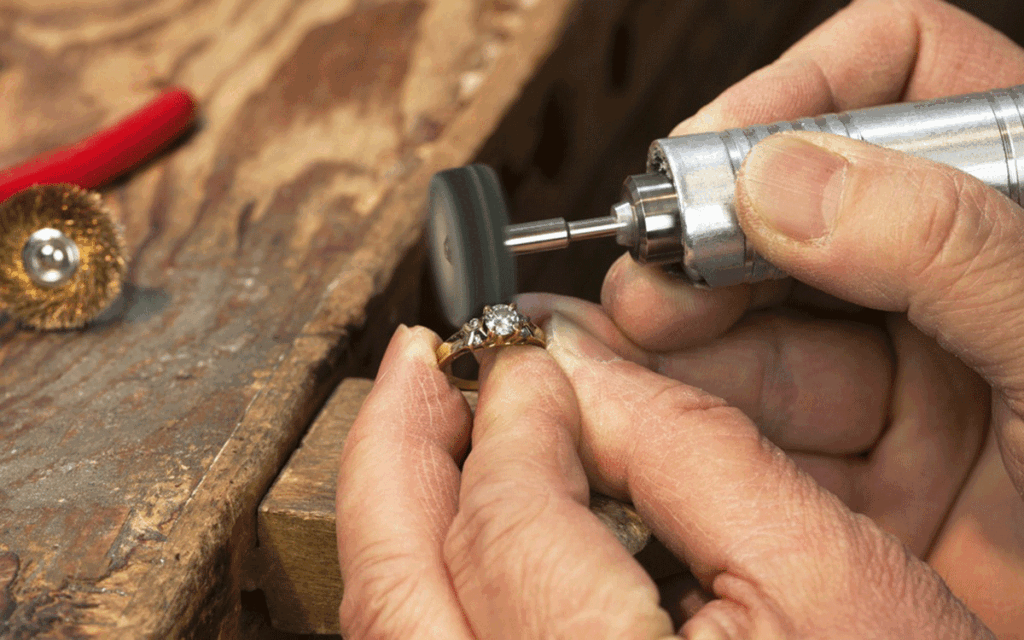
To be more quantitative, the GIA came up with the following polishing grades:
- Excellent – no polish flaws are visible under 10x magnification.
- Very Good – polish flaws are very difficult to see under 10x magnification.
- Good – flaws are somewhat difficult to see under 10x magnification
- Fair – some flaws can be seen under 10x magnification
- Poor – flaws can be seen by the naked eye.
Symmetry
Symmetry can be defined in many ways. But the one that is apt for diamonds is—the correct or pleasing proportion of the parts of a thing.
A good diamond symmetry means it has well-aligned facets. The top and bottom of the diamond line up along the girdle. And the facets are aligned symmetrically around the diamond.
Symmetry impacts a diamond’s way of interacting with light. Good symmetry allows light to travel through the diamond the way it should. A bad symmetry, on the other hand, sends light through defective angles; it may even exit through the bottom or sides of the diamond.
Other factors
The term “triple excellent diamond” is a marketing term similar to “GIA Triple X,” which jewelers used to entice unwary prospective buyers to buy the product. And they are mostly right. But not entirely right.
Yes, triple excellent diamonds have a good level of brilliance and high-quality cut but buying one is no guarantee that you get the most brilliant stone on display.
There are other factors that come into play like proportion, color, clarity, and carat.
Proportion
This is the ratio between height (or depth) and the stone’s total width and the size of the table. They also play significant roles in how a diamond reflects light.
The problem is that there is no optimal value for the height to table ratio. It varies according to cut. What’s good for one, may not be good for another.
For example, for a round-cut diamond like the one used in this Natalie Diamonds review, the ideal ratio is 62.3%—provided the table is within range. Otherwise, its light performance will be significantly affected. So to get the optimum brilliance, its table should be in the 54% to 57% range.
Color
Color can give a diamond a negative appearance even if it is triple excellent. This is especially true for diamond shapes that don’t hide color well. So to get the most of your triple excellent diamond, look for a stone with a color grade that is not so obvious in relation to its setting.
Related to color is diamond fluorescence—the emission of blue light when exposed to UV rays from the sun or fluorescent lamps. Fluorescence has a negative impact on a diamond’s price.
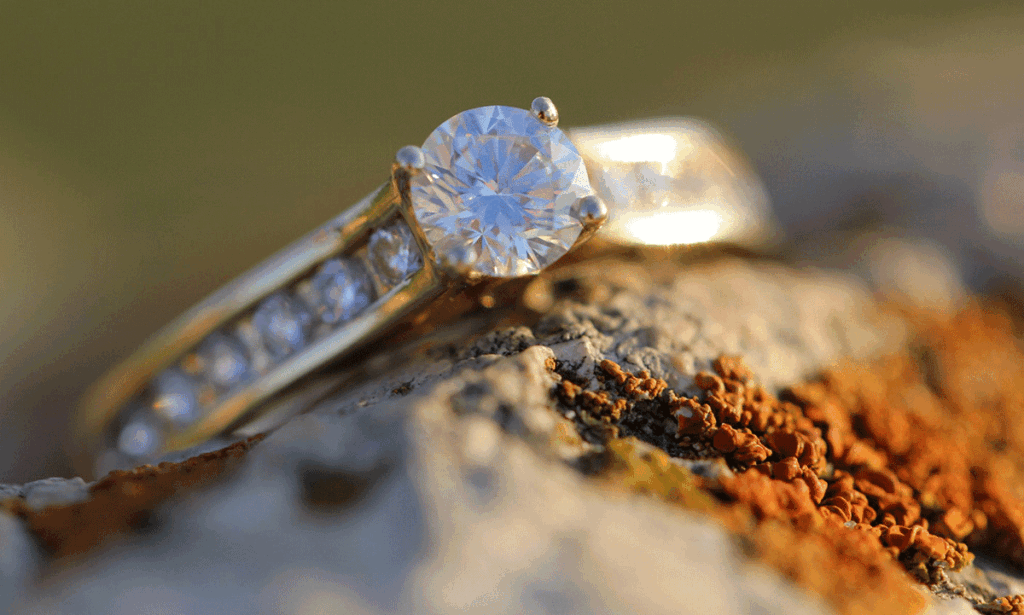
Clarity
Clarity is a measure of the presence of inclusions or surface imperfections of a stone. Diamonds with poor clarity have obvious imperfections that affect their appearance; making them look dull and lifeless.
Carat
The word “carat” was derived from a Greek word that means “fruit of the carob tree.” In ancient times, the pod of the carob tree was used as the standard of weight because its pods and seeds were identical in size and weight.
Then, in the Fourth General Conference on Weights and Measures in 1907, it was decided that the modern diamond carat should precisely be equal to 200 grams. This gave birth to the metric carat.
And why would a diamond carat be important in determining whether a triple excellent diamond is a good buy? Well, if you go back to “cut” standards, you will see that for the same carat size, Excellent is more expensive than a Very Good, or Good because of the extra polishing time. Yet, on the ocular level, you can’t tell the difference unless you look at them under magnification.
So what’s the bottom line?
A high-quality diamond is not always a triple excellent. A stone can be in the Very Good or Good category, yet have excellent symmetry and polish.
On the other side of the coin, a Tripe X-cut diamond can look dull if there are visible inclusions or strong fluorescence.
So if you are on a budget and still want to buy an engagement ring that bedazzles the eyes, look for a well-cut stone that displays plenty of brilliance. Examine it real close to see how well light bounces off its table and facets.
What is the Highest Quality Diamond Grading?
The highest quality diamond grading per the GIA grading system is the Flawless (FL) diamond (shown below).
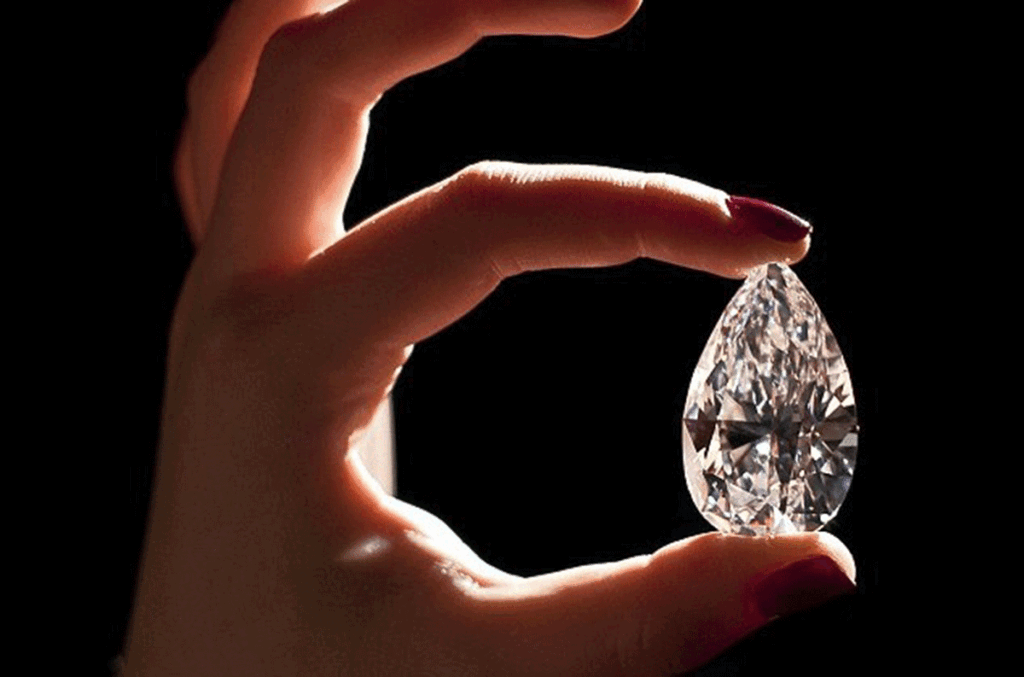
- Flawless – No inclusions or blemishes visible to a skilled grader using 10x magnification.
- Internally Flawless (IF) -No inclusions but with blemishes visible only to a skilled grader under 10x magnification.
- Very, Very Slightly Included (VVS1 and VVS2) –With inclusions but difficult for a skilled grader to see under 10× magnification.
- Very Slightly Included (VS1 and VS2) – With minor inclusions that are somewhat easy or difficult to see by a skilled grader to see under 10x magnification
- Slightly Included (SI1 and SI2) – The inclusions are noticeable to a skilled grader under 10x magnification.
- Included (I1, I2, and I3) – The inclusions are obvious under 10× magnification. They may affect transparency and brilliance.
Flawless diamonds are incredibly rare. So rare that it is estimated that only 0.5% of all diamonds belong to this category. And they are incredibly expensive, too. If some jeweler tries to sell you one, be careful. It may have surface blemishes at the outset, which were removed during polishing.
But here’s a caveat. If you are planning to treat your diamond purchase as an investment, then a Flawless or Internally Flawless will be perfect. They have the highest value and highest rates of appreciation.
Otherwise, a VVS or VS diamond will just be as good. And nobody will see the difference.
Triple X Diamonds: To Buy or Not to Buy
At first blush, Triple Excellent Diamonds are enticing to buy—especially if an over-eager salesperson is all over you smothering you with its attributes. And they do look marvelous with their superb fire and brilliance. But just because they are classified as such, doesn’t mean they are worth buying. You can save a lot of money by going for something of a lower category and people wouldn’t even know the difference.
The bottom line is this—a diamond’s quality must be considered holistically by taking all factors into consideration. The Triple X designation is only meaningful if other factors are present such as color and clarity, symmetry, and proportions. Definitely, they cost more. But this price premium may not matter to discerning buyers who want to buy top-of-the-line items.
But should you insist on buying a Triple X, buy from reputable vendors—online or traditional. They are not so rare anymore. Since 2005 when the GIA conducted extensive research on a diamond’s scintillation patterns that people find attractive, so many artisans responded to the challenge. This, compounded by the entry of new machines and processes, made Triple X easily available to the buying public.
